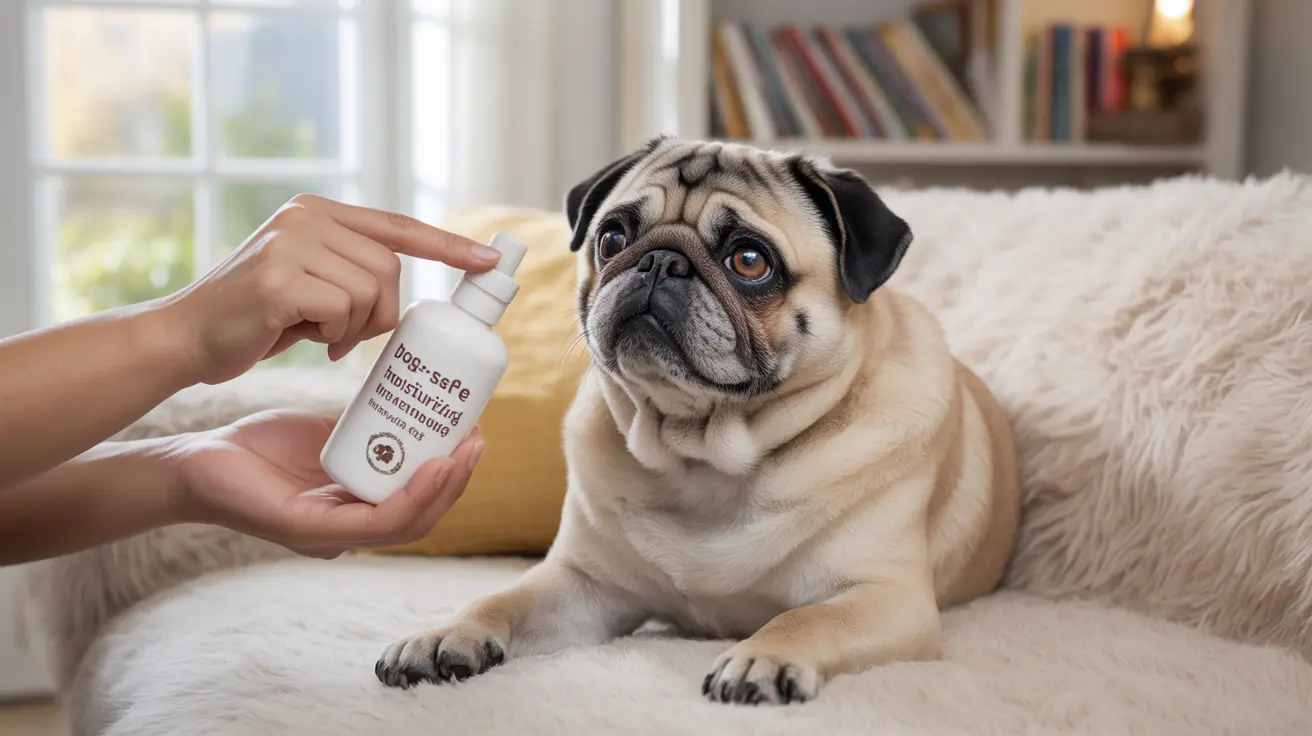As pet owners, we often want to care for our dogs the same way we care for ourselves. When you notice your furry friend has dry, itchy, or irritated skin, you might wonder, "Can I put lotion on my dog?" While the intention is good, using human lotions on dogs can be dangerous and potentially toxic. Let's explore the safe options for moisturizing your dog's skin and understand why human products aren't suitable for our canine companions.
Understanding Your Dog's Unique Skin Needs
Dogs have fundamentally different skin than humans. Their skin is thinner (only 3-5 cells thick compared to human skin's 10-15 cells) and has a different pH balance. This makes them more sensitive to topical products and means that human moisturizers can actually cause more harm than good.
Additionally, dogs naturally lick their skin and fur, meaning anything you apply to their skin will likely be ingested. This makes product safety even more critical, as what might be harmless on the skin could be toxic when swallowed.
Why Human Lotions Are Dangerous for Dogs
Human lotions contain numerous ingredients that can be harmful to dogs, including:
- Fragrances and artificial dyes that can cause allergic reactions
- Parabens and chemical preservatives that may be toxic if ingested
- Zinc oxide, commonly found in sunscreens
- Retinoids or retinol
- Xylitol, which is extremely toxic to dogs
- Alcohol-based ingredients that can irritate sensitive skin
Safe Moisturizing Options for Dogs
Veterinary-Approved Products
The safest option is always to use products specifically formulated for dogs. These include:
- Dog-specific moisturizing sprays
- Paw balms and waxes
- Medicated shampoos and conditioners
- Veterinary-prescribed topical treatments
Natural Alternatives
Some natural, food-grade options can be safe for temporary use:
- Unrefined coconut oil
- Pure shea butter (unscented)
- Food-grade lanolin
- Aloe vera (from the plant's inner leaf only)
Signs Your Dog Needs Moisturizing
Watch for these indicators that your dog might need skin care attention:
- Dry, flaky skin
- Excessive scratching
- Redness or inflammation
- Cracked or rough paw pads
- Dry, crusty nose
- Hair loss or dull coat
How to Properly Apply Moisturizer to Your Dog
When using dog-safe products, follow these guidelines:
- Clean the area gently first
- Apply a thin layer of the product
- Prevent your dog from licking the area for several minutes
- Monitor for any adverse reactions
- Reapply as directed on the product label
Preventing Dry Skin in Dogs
Prevention is often better than treatment. Consider these preventive measures:
- Feed a balanced diet rich in omega-3 and omega-6 fatty acids
- Use appropriate dog shampoos when bathing
- Maintain regular grooming
- Control environmental factors like humidity
- Protect paws from harsh surfaces and chemicals
Frequently Asked Questions
Can I safely put human lotion on my dog's skin or paws?
No, human lotions are not safe for dogs as they contain ingredients that can be harmful or toxic when ingested. Always use products specifically formulated for dogs.
What ingredients should I avoid in lotions or creams for my dog?
Avoid products containing xylitol, zinc oxide, fragrances, parabens, alcohol, retinoids, and chemical preservatives. These can be harmful to your dog if applied topically or ingested.
What are the best dog-specific lotions or natural alternatives for dry skin?
The best options include veterinary-approved dog moisturizers, paw balms, and natural alternatives like pure coconut oil or shea butter. Always choose products specifically formulated for dogs.
How can I apply lotion to my dog without them licking it off?
Apply a thin layer and distract your dog for several minutes to allow absorption. You can also use a cone collar if necessary or apply the product before activities that will keep them occupied.
When should I consult a vet about my dog's dry or irritated skin?
Consult a vet if skin problems persist for more than a few days, if there's excessive scratching, hair loss, redness, or if your dog shows signs of discomfort. Also seek veterinary advice before starting any new skin treatment regimen.
Remember, while skin issues can be concerning, it's always better to consult with your veterinarian before starting any new treatment plan for your dog's skin conditions. They can properly diagnose the underlying cause and recommend the most appropriate and safe treatment options.






